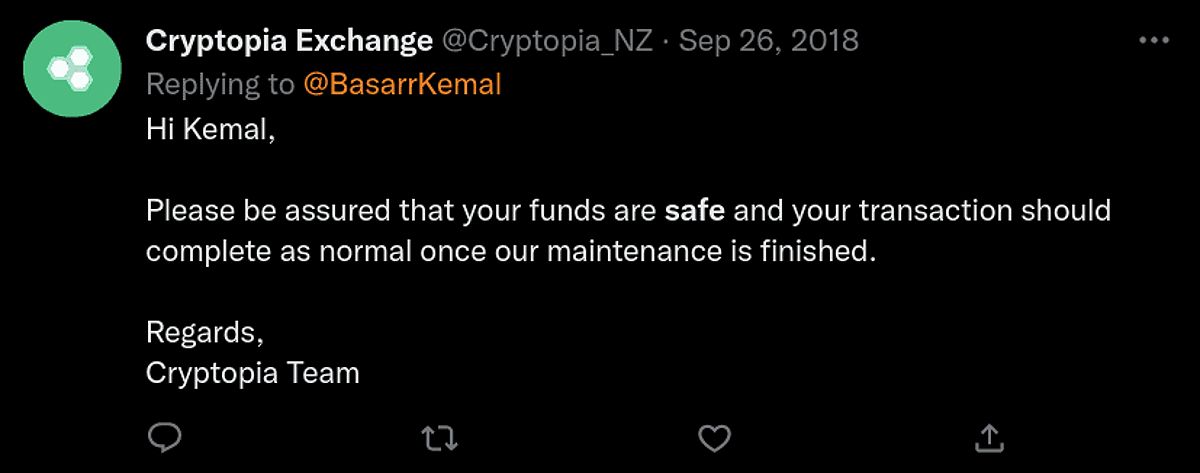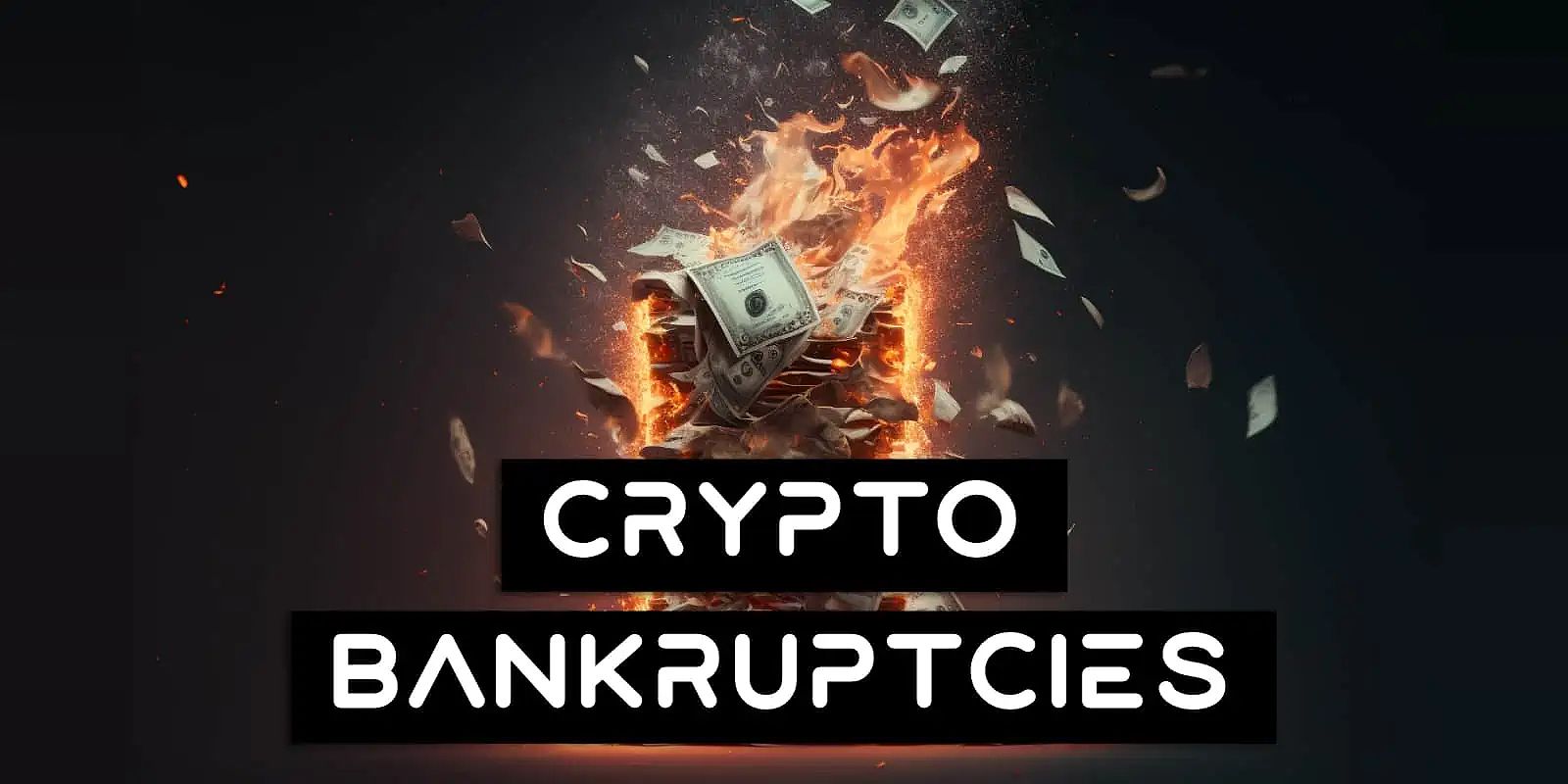Crypto trading platform bankruptcies have become a growing concern for investors in the digital asset space. The recent collapse of several high-profile platforms has highlighted the risks involved and the need for investors to be aware of the potential pitfalls. This article provides a comprehensive guide to navigating the treacherous terrain of crypto trading platform bankruptcies, ensuring you”re equipped with the knowledge and strategies to safeguard your investments in this ever-changing ecosystem.
The Perils Of Crypto Trading Platform Failures
The crypto market has captivated investors worldwide, lured by the promise of substantial returns. Yet, the lack of consistent regulation and the inherent volatility of digital assets have made these trading platforms vulnerable to a myriad of risks, from mismanagement to hacking and market downturns.
As I’ve closely followed the industry, the recent high-profile collapses of platforms like FTX and Celsius have been nothing short of devastating. Witnessing the ripple effects of these failures has underscored the urgent need for investors to be acutely aware of the potential pitfalls and take proactive measures to mitigate their exposure.
The lack of consistent regulation has allowed some platforms to engage in risky practices, such as commingling customer funds and making speculative investments, without adequate checks and balances. This fragmented regulatory landscape has exacerbated the vulnerabilities of these platforms, leaving investors at the mercy of sudden market downturns and platform mismanagement.
The collapse of platforms like LUNA/UST has further highlighted the inherent volatility of the crypto market, triggering a domino effect that has led to the downfall of interconnected trading platforms. Investors have found themselves facing significant losses, with their funds trapped within the bankruptcy proceedings.
Navigating The Aftermath: Reclaiming Your Crypto Assets
Legal Complexities And Recovery Challenges
The consequences of a crypto trading platform bankruptcy can be far-reaching, leaving investors in a state of uncertainty and financial turmoil. In the aftermath of such events, the recovery process can be arduous and complex, often with limited options for investors to reclaim their rightful holdings.
One of the primary concerns I’ve observed is the legal complexities surrounding the commingling of customer assets and the exchange’s own funds. This has created a tangled web of ownership and claims, making it incredibly challenging for investors to recover their losses.
 Crypto Exchange Bankruptcies: Spectacular And Ever Constant Image: Crypto Exchange Bankruptcies: Spectacular And Ever Constant
Crypto Exchange Bankruptcies: Spectacular And Ever Constant Image: Crypto Exchange Bankruptcies: Spectacular And Ever Constant
Navigating the bankruptcy proceedings and understanding the rights of creditors and users is crucial for maximizing the chances of recovering at least a portion of the lost funds. As an investor who has weathered such storms, I can attest to the importance of staying informed, engaging with legal representation, and exploring every possible avenue for recovery.
Strategies For Recovery
The process can be daunting, with investors often facing the prospect of lengthy legal battles and limited chances of recouping their full investments. However, by remaining vigilant, seeking professional guidance, and exploring all available options, investors can increase their chances of recovering at least a portion of their crypto assets.
Safeguarding Your Crypto Investments
In the face of these daunting challenges, I firmly believe that proactive strategies and a disciplined approach to risk management can help crypto investors navigate the treacherous terrain of platform bankruptcies.
Diversify, Diversify, Diversify
One of the fundamental tenets I’ve adopted in my own investment portfolio is diversification. By spreading your crypto investments across multiple platforms and asset classes, you can significantly reduce the impact of a single platform’s collapse. This approach ensures that your overall portfolio is not overly reliant on the stability of any one exchange.
Diversifying your investments can provide a safeguard against the ripple effects of a platform bankruptcy, minimizing the potential for substantial losses. It’s important to carefully research and evaluate a range of crypto trading platforms, considering factors such as their financial stability, security measures, and regulatory compliance.
 Mt Gox Bankruptcy Image: Mt Gox Bankruptcy
Mt Gox Bankruptcy Image: Mt Gox Bankruptcy
Embrace Self-custody
As an experienced crypto investor, I’ve come to appreciate the power of self-custody. By storing your cryptocurrencies in a private wallet, where you have direct control over your private keys, you effectively remove the intermediary and become the sole custodian of your digital assets. This strategy drastically reduces the risk of losing your funds in the event of a platform bankruptcy.
Self-custody solutions, such as hardware wallets or decentralized platforms, empower you to take full responsibility for the security of your crypto assets. While this approach may require a learning curve, it offers a far more robust protection against the risks associated with centralized trading platforms.
Conduct Thorough Due Diligence
Before entrusting your hard-earned crypto assets to a trading platform, I cannot stress enough the importance of conducting extensive research and due diligence. Evaluate the platform’s reputation, security measures, financial stability, and regulatory compliance. This comprehensive approach can help you identify potential red flags and make informed decisions about the platforms you choose to engage with.
Staying vigilant and proactively monitoring the platforms you use can provide early warning signs of potential issues, allowing you to take timely action to safeguard your investments.
 FTX Bankruptcy Image: FTX Bankruptcy
FTX Bankruptcy Image: FTX Bankruptcy
Stay Informed And Advocate For Change
As the crypto industry continues to evolve, it is crucial to stay informed about the regulatory landscape and the latest developments. Engage with industry organizations, policymakers, and thought leaders to advocate for stronger investor protection measures and increased oversight of crypto trading platforms. By lending your voice to this effort, you can contribute to shaping a more secure and transparent ecosystem for all participants.
Advocating for regulatory reforms and a more robust investor protection framework can help address the fragmented nature of the current landscape, ensuring that your crypto investments are better safeguarded against the risks of platform bankruptcies.
 Celsius Bankruptcy Image: Celsius Bankruptcy
Celsius Bankruptcy Image: Celsius Bankruptcy
Faqs: Navigating The Complexities Of Crypto Trading Platform Bankruptcies
Q: What are the early warning signs that a crypto trading platform may be at risk of bankruptcy? A: Some potential warning signs include a history of security breaches, financial instability, negative user reviews, and regulatory investigations. It’s crucial to monitor the platform’s operations and financial health closely to identify any concerning trends.
Q: How can I recover my funds if a crypto trading platform files for bankruptcy? A: The recovery process can be complex and dependent on the specific bankruptcy proceedings. Filing a claim with the bankruptcy court and exploring legal remedies are essential steps. The success of recovery efforts may vary, and investors may face challenges in recouping their full investment.
Q: Are there any government regulations or protections for investors in the event of a crypto trading platform bankruptcy? A: The regulatory landscape surrounding crypto assets is still evolving, and investor protection measures vary across jurisdictions. While some countries have introduced guidelines and frameworks for crypto regulation, the landscape remains fragmented. Advocating for stronger investor protection policies can help address this issue and provide a more secure environment for crypto investors.
Conclusion
The crypto industry has the potential to revolutionize the financial landscape, but the recent spate of high-profile bankruptcies has underscored the critical need for robust investor protection measures and a more comprehensive regulatory framework. By staying informed, diversifying our investments, prioritizing self-custody, and advocating for positive change, we can navigate the treacherous terrain of crypto trading platform failures and emerge stronger, more resilient investors.
As we move forward, I encourage you to embrace the opportunities that the crypto market presents, but do so with a keen eye on risk management and a steadfast commitment to safeguarding your financial interests. Together, we can shape the future of this dynamic and ever-evolving industry.

